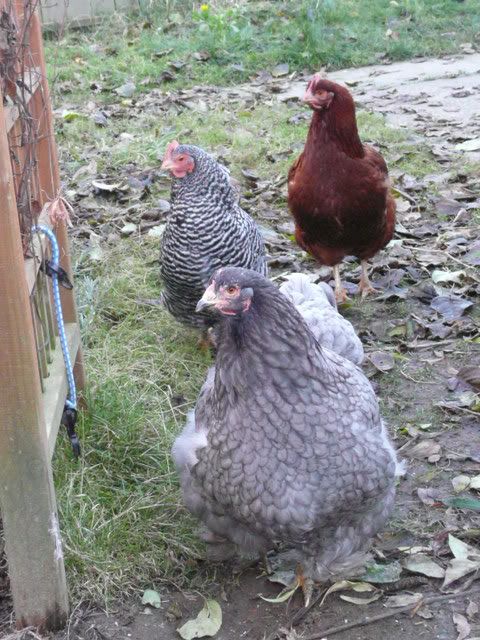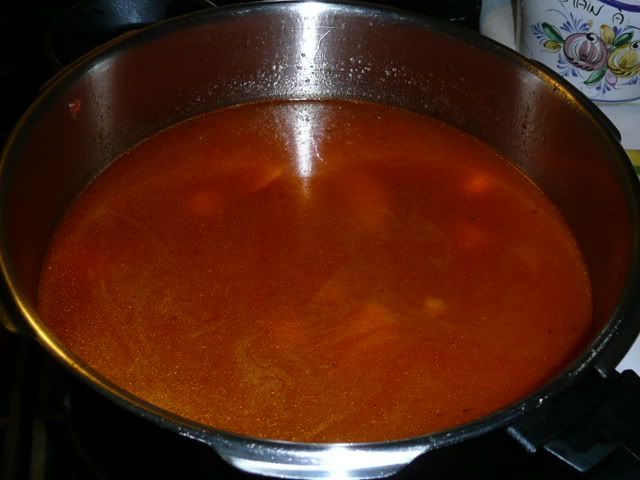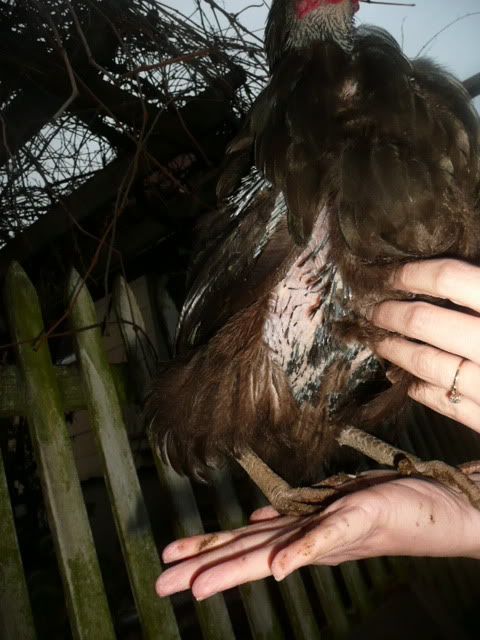The title to this post is a little
double entendre.
First, I'm officially overdue. My due date of 12/14/11 has come and gone without "Bean" sprouting. I open facebook every morning to a slew of messages from friends around the globe asking if the baby has arrived. The notes usually are along the lines of "haven't see a post from you in 8 hours - the baby here yet?". These crack me up as I tend to sleep for about 8 hours daily. Maybe I need to post at 3a when I heave my bulk out of bed to pee?
I've begun maternity leave. I decided that I wasn't going to get any sort of medal for sitting around at work wasting time until my due date. So now I'm at home and have my days free to... well... I'm still figuring out what to do with myself.
Yesterday I went with a girlfriend and her 3-year-old daughter to
Watson's, a nearby nursery that had 2 reindeer on site. Here is Bean with the oh-so-curious Donner. Blitzen is the brown reindeer in the background.
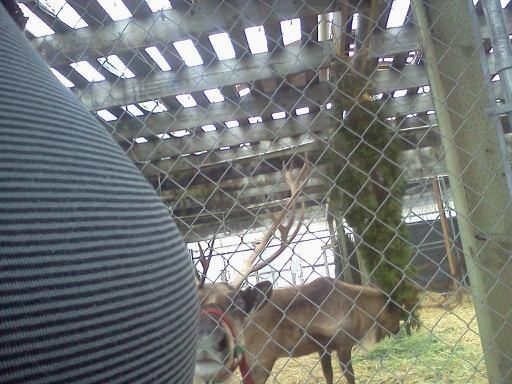 |
| "Your belly looks like Santa's." |
After our visit with the reindeer, my girlfriend fed me a delicious beef stew made with the last of the veggies from her incredibly prolific garden. My own veggie garden suffered badly from neglect and I spent much of the summer green with envy of her gorgeous vegetables.
The beef stew gave me a hunkering for more. But with a doctor appointment that went from 2-4 yesterday afternoon and no ingredients in the house for stew, I'd have to wait until today to create that simmered-all-day flavor.
... or would I?
Pressure cooker to the rescue!
I stopped by the grocery store on the way home and picked up stew meat, bagged carrots, baby red potatoes, and bagged green beans. In my pantry there were home-canned tomatoes, broth, and corn, plus onions, garlic, and all the requisite seasonings.
The great thing about beef stew is that you don't really need a recipe. It lends itself fabulously to what I call "method cooking". Once you have the general method of how to make it, you can repeat and create new variations based on what's in your own pantry.
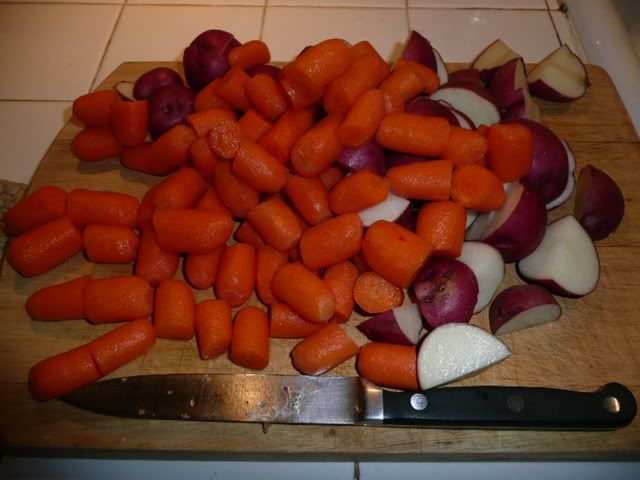 |
| Make sure veggies are bite-sized. |
I made this in my pressure cooker but you could easily make it in a slow cooker or on your stovetop.
Here's what went into my beef stew. Change up the veggies in your own version based on what's available to you.
INGREDIENTS
2 lbs beef stew meat
1 tbsp vegetable oil
1 onion, chopped
3 cloves garlic
2 bay leaves
1 tsp dried thyme
1/2 tsp dried rosemary
1 quart home-canned tomatoes
1 pint home-canned corn
1 lb baby carrots, cut in half
1.5 baby red potatoes, cut in quarters
1 pint chicken or beef broth
1 lb green beans, cut into bite-sized pieces
salt & pepper to taste
enough cornstarch to thicken the mix
METHOD
1. Brown meat in the oil. Add chopped onion, whole garlic cloves, and tomatoes. Close the pressure cooker, vent according to directions, and cook on the highest pressure for 25 minutes.
2. When time is up, open the pressure cooker (safely!), add the corn, carrots, potatoes, broth, and enough water to cover everything. Bring to a boil and close the cooker again. Cook for 10 more minutes under highest pressure.
3. Next, add green beans to the stew and cook without the lid until crisp-tender (approx 4-5 minutes). The prevents the green beans from getting mushy, over-cooked, and turning grey.
4. Add salt and pepper to taste, and thicken with cornstarch if desired. If you've never thickened hot liquid with cornstarch, be sure to stir it into some cold water then add to the hot soup to avoid clumps.
Start to finish, this stew took about an hour in the pressure cooker. It was the first time I'd used my cooker in stages, meaning that I'd cook, then open, the cook, then open again. It worked well. I served the stew with toasted, buttered asiago cheese bread. It was hearty and perfect for a cold December evening... and tasted like it had been simmering all day.
Enjoy!

